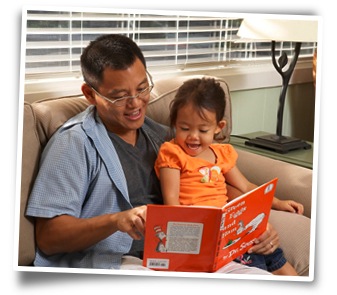
Background & History
The goals of HICORE are:
- To serve as a repository of childhood and adolescent obesity research projects conducted in Hawaiʻi.
- To provide guidance to granting agencies and foundations regarding research priorities in the area of childhood and adolescent obesity for the state of Hawaiʻi.
- To serve as a center for the education of community members, medical students, residents, physicians and others in the area of childhood and adolescent obesity in Hawaiʻi.
- To conduct research on childhood and adolescent obesity relevant to the people of Hawaiʻi.
Our major focus in 2009, our first year of work, has been the establishment of the HICORE infrastructure, the development of collaborations, establishment of the strategic plans, initiation of an educational continuing medical education (CME) series on issues related to childhood obesity, planning and development of the HICORE website and the writing and submission of several collaborative grant applications in response to “request for proposals/applications” relevant to the HICORE mission. All activities outlined proposed Year 1 Timeline have been accomplished.
In 2008, a group of individuals, representing different sectors of the local community met for a series of meetings to discuss the idea of developing a collaborative effort in Hawaiʻi to address childhood obesity. Groups represented included members of the University of Hawaiʻi John A. Burns School of Medicine, Department of Pediatrics, Department of Public Health Sciences, Department of Complementary and Alternative Medicine, University of Hawaiʻi School of Nursing, Hawaiʻi State Department of Health, Hawaiʻi State Department of Human Services, Hawaiʻi Medical Association, American Academy of Pediatrics-Hawaiʻi Chapter and several other community organizations. The group recognized the work on the State Department of Health and the Hawaiʻi Physical Activity and Nutrition Plan and agreed that efforts should continue within the framework of this plan in collaboration with the Nutrition and Physical Activity Coalition. The group endorsed the creation of an initiative within the University of Hawaiʻi John A. Burns School of Medicine Department of Pediatrics.
Statement of Need:

The prevalence of obesity in adolescents and children has increased dramatically over the last three decades in the United States. The latest National Health and Nutrition Examination Surveys (NHANES) analysis, combining data from the 2003 to 2006 reported that an estimated 16.3% children and adolescents ages 2-19 years were obese and 31.9% were overweight (Ogden, 2008). Among children in Hawaiʻi, recent data suggests that obesity problem may be even more critical. A study of the 10,199 children entering kindergarten, from 2002-2003, in Hawaiʻi public schools found that 28.5% of the children were overweight or obese (Pobutsky, et al., 2006). Although there is little data on obesity in Hawaii’s children, reports suggest that the problem may be worse among some ethnic and socio-economic groups. A study of preschool children in Hawaiʻi, 27% of Samoan children 2-4 years old were overweight compared with 12.4% of Filipino children (Baruffi et al, 2005). In a large study of mostly low-income children attending a rural health center on Oahu (Okihiro et al, 2006) the prevalence of childhood overweight and obesity was much higher than that found by NHANES; 26% of children 2 to 19 years were obese and 16.5% were overweight. By 13-19 years of age, 24% of teens were obese by adult classification (BMI >= 30) and 6.6% had a BMI in the range considered to be severe obesity (BMI >= 40).
The consequences of childhood obesity are well known and include type 2 diabetes mellitus, hypertension, cardiovascular and liver disease as well as social and psychological consequences such as discrimination, stigmatization and low self-esteem (Freedman, 1999 Dietz, 1998, Gortmaker et al., 1993; Stunkard & Burt, 1967). Concurrent with the rising prevalence and severity of childhood obesity have been reports of a rise in the prevalence of high blood pressure and type 2 diabetes mellitus in children, diseases once thought to be seen only in adults (Sorof et al, 2004, Mayer 2008). These trends underscore the urgency of addressing the obesity epidemic.
The socio-ecologic model recognizes the complex interplay between individuals, relationships to others, community and society in the development, prevention and treatment of many chronic diseases associated with lifestyle including obesity. The model recognizes that the most effective approach leading to healthy behaviors is a combination of efforts at all levels of society – individual, interpersonal, organizational, community and public policy. In an extensive review of childhood obesity, the Institute of Medicine (IOM) used the ecologic model in their national action plan to address childhood obesity and recommended that approaches informed by this model are essential to effectively addressing the very complex and challenging issues of childhood obesity (Koplan et al, 2005). Numerous national and international organizations, including the IOM, International Obesity Task Force, and the World Health Organization have emphasized a multi-level, multi-sector approach to obesity based on this model (Koplan et al, 2005, WHO 2000).
